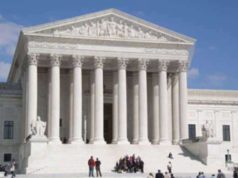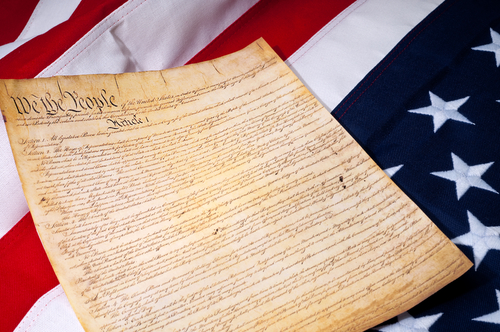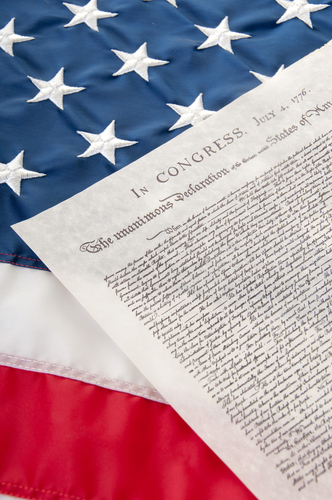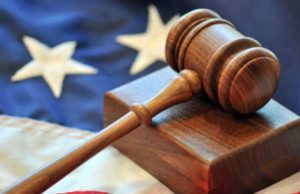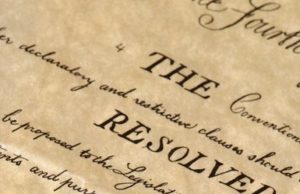Table of Contents
- 1 The 26th Amendment: The Impact of Giving Young People a Voice in the United States
- 1.1 Background
- 1.2 Impact on the United States
- 1.3 Criticism and Challenges
- 1.4 The Future of the 26th Amendment
- 1.5 What is the 26th Amendment?
- 1.6 The 26th Amendment Defined
- 1.7 26th Amendment Facts
- 1.8 States Ratifying the 26th Amendment:
- 1.9 States Not Participatory in the Ratification of the 26th Amendment:
- 1.10 Court Cases Associated with the 26th Amendment:

The 26th Amendment: The Impact of Giving Young People a Voice in the United States
The 26th Amendment is one of the most important amendments in the United States Constitution. This amendment, which was ratified in 1971, lowered the voting age from 21 to 18, expanding the right to vote to millions of young Americans. The 26th Amendment was a major step forward for democracy, as it recognized that young people have a right to participate in the political process and have their voices heard on important issues. In this article, we will explore the history of the 26th Amendment and examine how it has influenced the United States.
Background
The 26th Amendment was passed in response to the Vietnam War, which had become an increasingly divisive issue in the United States during the 1960s. Many young people were being drafted into the military and sent to fight in Vietnam, but they were not allowed to vote because the voting age was 21. This was seen as a major injustice by many people, who argued that if someone was old enough to fight and die for their country, they should also have the right to vote.
In response to this movement, Congress passed the 26th Amendment on March 23, 1971. This amendment was the fastest to be ratified in the history of the United States, as it was approved by the required number of states (38) in just three months.
Impact on the United States
Since the passage of the 26th Amendment, young people have become an increasingly important voice in the political process. According to the Census Bureau, in the 2020 presidential election, about one in ten eligible voters were under the age of 30. While this is a relatively small percentage of the overall electorate, young people have played a significant role in recent elections, particularly in the 2018 midterms and the 2020 presidential election.
One of the major benefits of the 26th Amendment has been its impact on voter turnout among young people. Prior to the amendment, young people were often disenfranchised and felt that their voices were not being heard. This led to low voter turnout among young people, with only about half of eligible young voters casting a ballot in the 1960 presidential election. However, after the amendment lowered the voting age, young people became much more engaged in the political process. Today, voter turnout among young people is much higher, with young people turning out at rates that are often higher than the overall electorate.
Another benefit of the 26th Amendment has been its impact on policy. Since young people are now able to vote, politicians are more likely to pay attention to issues that are important to them. This has led to progress on issues like climate change, gun control, and racial justice, which are all issues that young people are particularly passionate about.
One of the most notable examples of young people making an impact on policy was the 2018 March for Our Lives movement, which was organized by survivors of the mass shooting at Marjory Stoneman Douglas High School in Parkland, Florida. The movement called for stricter gun control laws and led to changes in gun laws in several states, including Florida.
Criticism and Challenges
While the 26th Amendment has had many positive impacts, it has also faced criticism and challenges. Some people argue that young people are not mature or informed enough to make responsible decisions at the ballot box. Others argue that young people are too easily swayed by emotions and are not able to think critically about complex issues.
There is some evidence to support these concerns, as young people are often less well-informed than older voters and are more likely to be influenced by social media and other sources of information that may not be reliable. However, there is also evidence to suggest that young people are just as capable of making informed decisions as older voters. In fact, studies have shown that young people are often more optimistic, idealistic, and committed to social justice than older voters.
Another challenge facing the 26th Amendment is the issue of voter suppression. While the amendment guarantees the right to vote for young people, many states have enacted laws that make it harder for young people (and other groups) to vote. These laws, which include voter ID laws, polling place closures, and restrictive registration requirements, often disproportionately impact young people and other marginalized communities.
The Future of the 26th Amendment
Despite these challenges, the 26th Amendment remains a vital part of the United States Constitution. As the country faces new challenges and opportunities, young people will continue to play an important role in shaping the future of the country. The impact of the amendment can be seen in the many young activists, organizers, and politicians who are working to make the United States a more just and equitable society.
As we approach the 50th anniversary of the 26th Amendment, it is important to reflect on its impact and to continue working to ensure that young people are able to exercise their right to vote and participate in the political process. By doing so, we can help to create a stronger, more vibrant, and more inclusive democracy in the United States.
What is the 26th Amendment?
Section 1. “The right of citizens of the United States, who are eighteen years of age or older, to vote shall not be denied or abridged by the United States or by any State on account of age.”
Section 2. “The Congress shall have the power to enforce this article by appropriate legislation.”
The 26th Amendment Defined
Date Proposed:
The 26th Amendment was proposed on March 23rd, 1971
Date Passed:
The 26th Amendment was passed on July 7th, 1971
President of the United States:
Richard Nixon was the President of the United States during the ratification of the 26th Amendment
Stipulations of the 26th Amendment:
The 26th Amendment was a Congressional activation of the adjustment of the voting age within the United States of America; this Amendment allowed for the national voting age to be adjusted to 18 years of age
The 26th Amendment allowed for the institution of a national voting age in lieu of the preexisting statutes, which allowed for the variance in the legal voting age taking place on a state-by-state basis
26th Amendment Facts
Prior to the passing of the Amendment, President Nixon had passed the Voting Rights Act of 1965, which had allowed for the national voting age with regard to Federal and State elections to be set at a mandatory 18 years of age; however, only after its ratification did the 26th Amendment become Constitutional legislature
Upon President Eisenhower addressing the nation in his State of the Union address in 1954, he introduced the elimination of the refusal of suffrage with regard to age parameters
Prior to the passing of the 26th Amendment, only 4 states allowed individuals under 21 years of age the right to vote
States Ratifying the 26th Amendment:
1. Alabama
2. Alaska
3. Arizona
4. Arkansas
5. California
6. Colorado
7. Connecticut
8. Delaware
9. Georgia
10. Hawaii
11. Idaho
12. Illinois
13. Indiana
14. Iowa
15. Kansas
16. Louisiana
17. Maine
18. Maryland
19. Massachusetts
20. Michigan
21. Minnesota
22. Missouri
23. Montana
24. Nebraska
25. New Hampshire
26. New Jersey
27. New York
28. North Carolina
29. Ohio
30. Oklahoma
31. Oregon
32. Pennsylvania
33. Rhode Island
34. South Carolina
35. Tennessee
36. Texas
37. Vermont
38. Virginia
39. Washington
40. West Virginia
41. Wisconsin
42. Wyoming
States Not Participatory in the Ratification of the 26th Amendment:
1. Florida
2. Kentucky
3. Mississippi
4. Nevada
5. New Mexico
6. North Dakota
7. South Dakota
8. Utah
Court Cases Associated with the 26th Amendment:
Oregon v. Mitchell (1970) – this court case took place in the wake of the Vietnam War; the proceedings resulted in the Supreme Court revoking the permission granted to individual states to determine their respective voting age(s)







